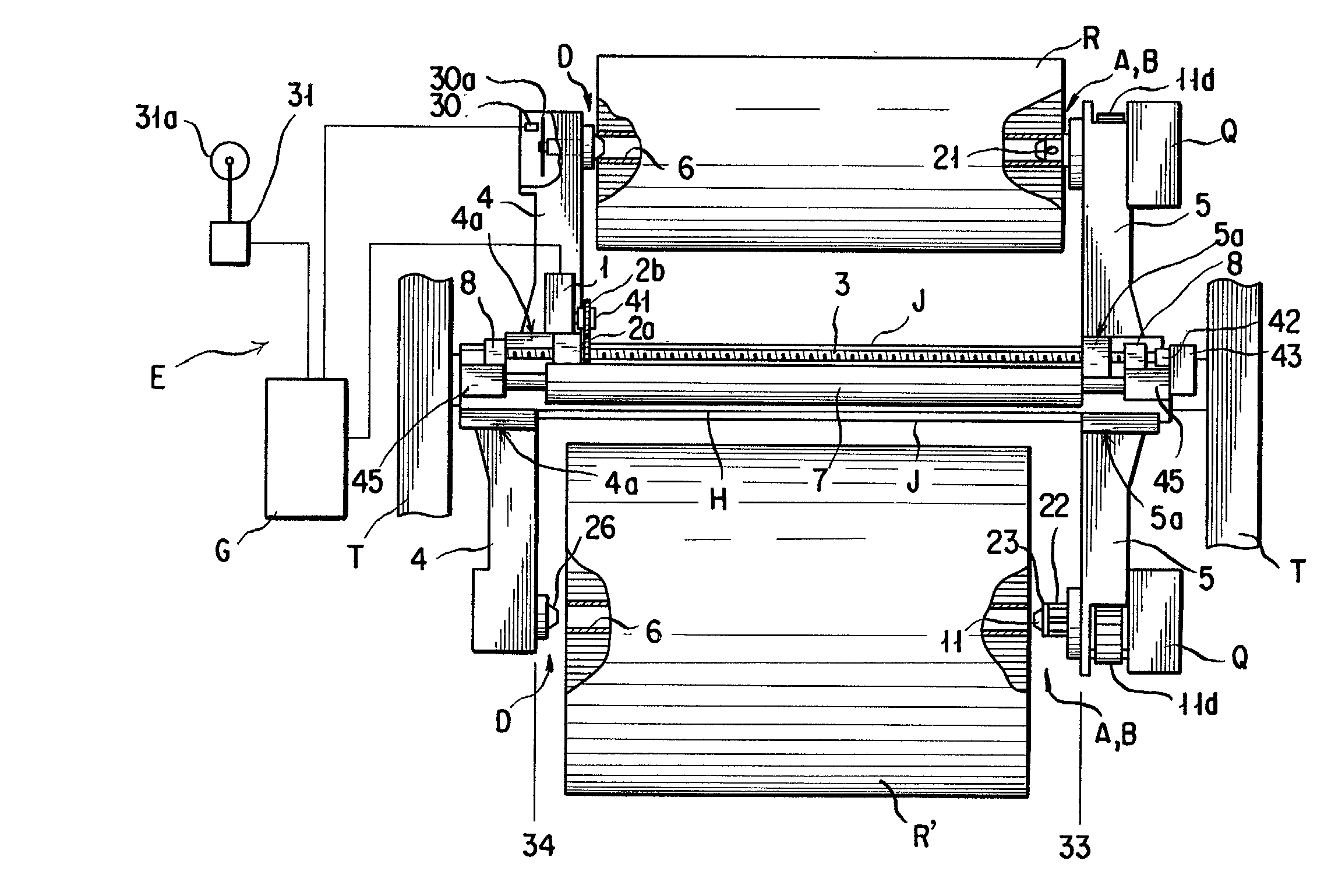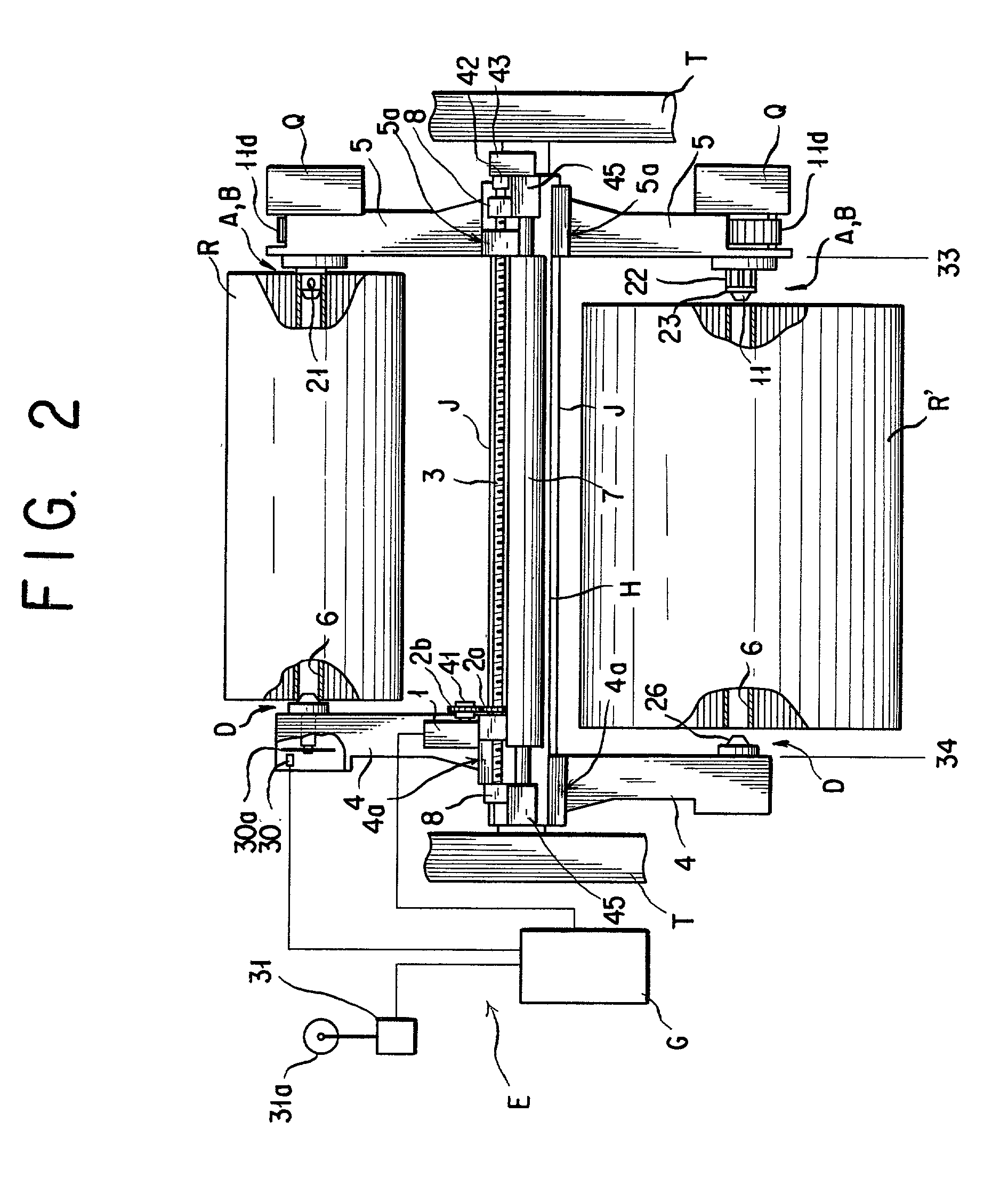Web infeed for a rotary printing press
a rotary printing press and web infeed technology, applied in the direction of thin material handling, filament handling, article delivery, etc., can solve the problems of inconvenience, web was broken, and unnecessarily large web dimension
- Summary
- Abstract
- Description
- Claims
- Application Information
AI Technical Summary
Benefits of technology
Problems solved by technology
Method used
Image
Examples
Embodiment Construction
General
[0031] The representative web infeed for a rotary printing press, shown in its entirety in FIGS. 1 and 2, has a rotary carrier beam H of generally square cross section for carrying the various working parts and components of the web infeed to be set forth hereinbelow. Extending horizontally, the carrier beam H has its opposite ends rotatably journaled in a pair of confronting, upstanding framing walls T of the press. It is understood that a drive mechanism, not shown, of any known or suitable design is coupled to the carrier beam H for revolving the same. On each of a pair of opposite side surfaces of the carrier beam H there are formed a pair of guide rails J extending longitudinally of the beam. Two pairs of carrier arms 4 and 5 are mounted on the respective pairs of guide rails J via shoes 4a and 5a for sliding motion longitudinally of the carrier beam H.
[0032] A closer inspection of FIGS. 1 and 2 will reveal that one roll R of paper web is supported between one pair of ca...
PUM
| Property | Measurement | Unit |
|---|---|---|
| Force | aaaaa | aaaaa |
| Diameter | aaaaa | aaaaa |
| Displacement | aaaaa | aaaaa |
Abstract
Description
Claims
Application Information
 Login to View More
Login to View More - R&D
- Intellectual Property
- Life Sciences
- Materials
- Tech Scout
- Unparalleled Data Quality
- Higher Quality Content
- 60% Fewer Hallucinations
Browse by: Latest US Patents, China's latest patents, Technical Efficacy Thesaurus, Application Domain, Technology Topic, Popular Technical Reports.
© 2025 PatSnap. All rights reserved.Legal|Privacy policy|Modern Slavery Act Transparency Statement|Sitemap|About US| Contact US: help@patsnap.com



